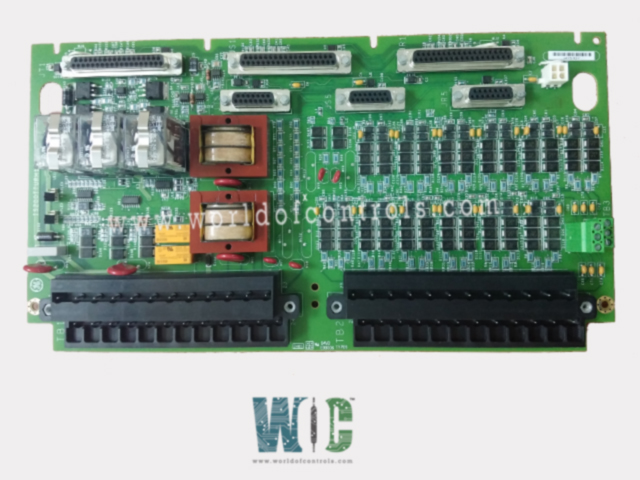
World Of Controls understands the criticality of your requirement and works towards reducing the lead time as much as possible.
IS200TTURH1BAA - Turbine Trip Protection Board is available in stock which ships the same day.
IS200TTURH1BAA - Turbine Trip Protection Board comes in UNUSED as well as REBUILT condition.
To avail our best deals for IS200TTURH1BAA - Turbine Trip Protection Board, contact us and we will get back to you within 24 hours.
SPECIFICATIONS:
Part Number: IS200TTURH1BAA
Manufacturer: General Electric
Series: Mark VI
Board Type: Turbine Trip Protection Board
Number of inputs: 12
Number of outputs: 5A
Power supply voltage: 125 V dc
MPU Pulse Rate Range: 2 Hz
Signal Voltage Levels: TTL/CMOS
MPU Pulse Rate Accuracy: 0.05
Contact voltage sensing: 20 V dc
Maximum Delay Compensation: Up to 100 ns
Clock Frequency: Up to 200 MHz
Operating Temperature Range: -30°C to +65°C
Dimensions: 33.0 cm high x 17.8 cm
MPU Input Circuit Sensitivity: 27 mV
Mounting Type: Surface-mount
Repair: 3-7 Day
Availability: In Stock
Country of Origin: United States
FUNCTIONAL DESCRIPTION:
IS200TTURH1BAA is a Turbine Trip Protection Board manufactured and designed by General Electric as part of the Mark VI Series used in GE Speedtronic Turbine Control Systems. TTUR has three relays, K25, K25P, and K25A, that all have to close to provide 125 V dc power to close the main breaker 52G. The speed signal cable to VTUR uses the JR5 connector, and the other signals use the JR1 connector. For TMR systems, signals fan out to the JR5, JS5, JT5, JR1, JS1, and JT1 connectors. For the Mark VI system, the VTUR processor works with TTURH1B. Simplex and TMR systems are supported. With TMR systems, TTURH1B is cabled to three VTUR boards. The turbine terminal board, TTUR, works with the turbine I/O processor and has inputs and outputs as follows:
INSTALLATION:
Magnetic pick-ups, shaft pick-ups, potential transformers, and breaker relays are wired to two I/O terminal blocks TB1 and TB2. Each block is held down with two screws and has 24 terminals accepting up to #12 AWG wires. A shield termination strip attached to the chassis ground is located immediately to the left of each terminal block. Jumpers JP1 and JP2 select either SMX or TMR for relay drivers K25 and K25P. TB3 is for optional TTL connections to active speed pickups; these require an external power supply. Simplex systems use cable connectors JR5 and JR1. TMR systems use all six cable connectors.
OPERATION:
In the simplex application, up to four pulse rate signals may be used to measure turbine speed. Generator and bus voltages are brought into TTUR for automatic synchronizing in conjunction with VTUR, the turbine controller, and the excitation system. TTUR has a permissive generator synchronizing relays and controls the main breaker relay coil 52G. In TMR applications all inputs fan to the three control racks. Control signals coming into TTUR from R, S, and T are voted before they actuate permissive relays K25 and K25P. Relay K25A is controlled by the VPRO and TREG boards.
WOC has the largest stock of OEM replacement parts for GE Speedtronic Turbine Control Systems. We can also repair your faulty boards and supply unused and rebuilt boards backed up with a warranty. Our team of experts is available round the clock to support your OEM needs. Our team of experts at WOC is happy to assist you with any of your automation requirements. For pricing and availability on parts and repairs, kindly contact our team by phone or email.
What is the Turbine Trip Protection Board?
A Turbine Trip Protection Board is designed for the Mark VI turbine control system. It monitors critical turbine parameters and provides trip protection by shutting down the turbine if hazardous conditions arise, such as Overspeed or voltage imbalances.
What does the Turbine Trip Protection Board do?
The Turbine Trip Protection Board ensures the safe operation of turbines by receiving inputs such as turbine speed, generator voltage, and shaft parameters, and it triggers a trip even if the turbine operates outside safe parameters. It also assists in automatic generator synchronizing and controlling the main breaker relay (52G).
How many inputs and outputs does the board have?
The Turbine Trip Protection Board has 12 inputs from passive pulse rate devices (for turbine speed measurement) and outputs rated at 5A, which control the breaker relay for turbine trip functions.